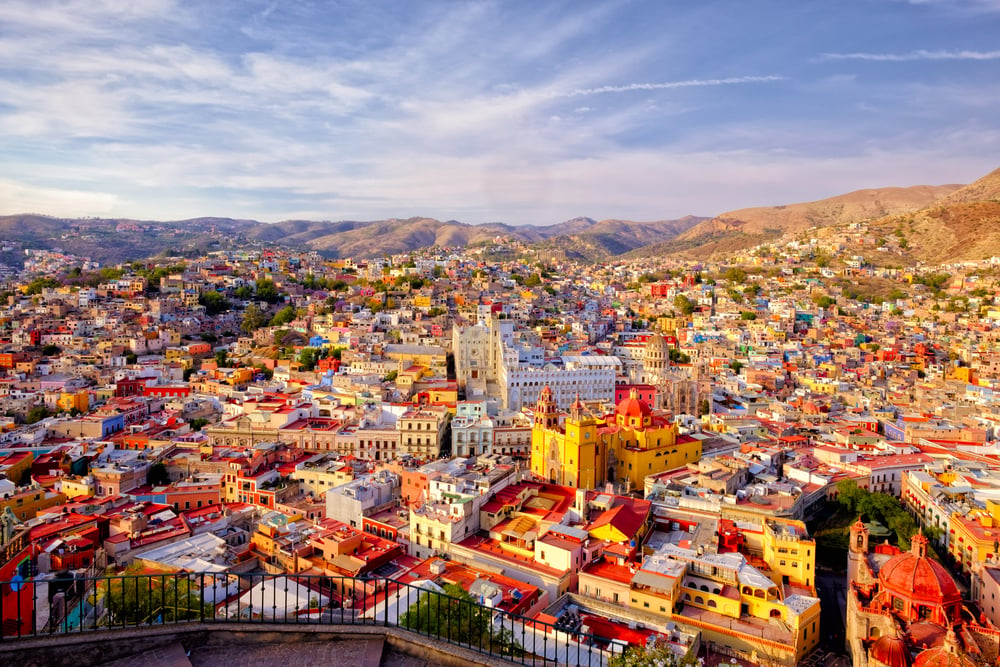Mexico attracts foreign direct investment through a broad combination of factors, most notably its economic stability, welcoming business client, skilled labor pool, and close proximity to one of the world’s largest consumers, the United States. Foreign investment has become a major part of Mexico’s economy, with long-term foreign direct investments making up between 2.3% to nearly 4% of Mexico’s GDP in recent years, according to World Bank data.
In simple terms, foreign investment is the flow of capital from one country to another through the foreign investor’s ownership in a company in another country. Foreign direct investment occurs through physical transactions, such as opening a manufacturing plant or buying real estate or other equipment in a foreign country. Unlike foreign indirect investment, in which private investors or financial institutions purchase stock or a share of a company, foreign direct investment is considered economically favorable.
Global Direct Investment
Mexico's allure for foreign direct investment (FDI) is intricately linked to its integration into global value chains, making it a strategic destination for companies seeking to optimize their manufacturing processes. As businesses navigate the complexities of supply chain globalization, Mexico emerges as a pivotal player, offering a robust infrastructure and skilled workforce conducive to seamless integration into global value chains.
With its proximity to one of the world's largest consumer markets, the United States, Mexico serves as a gateway for companies looking to capitalize on regional distribution strategies while maintaining cost competitiveness. By leveraging Mexico's position within global value chains, companies can enhance their agility, efficiency, and resilience in the face of evolving market dynamics, solidifying the country's status as a prime destination for foreign investment.
However favorable, global flows of foreign investment have come under severe pressure as a result of global supply chain shakeups in recent years. According to the United Nations Conference on Trade and Development (UNCTAD) World Investment Report, companies are increasingly seeing the need to balance competitive manufacturing costs with regional distribution strategies to take control of rising costs. Multinational enterprises, UNCTAD predicts, may find they need to transform their international production strategies to keep up. Most notably, the UN experts suggest that global companies may want to consider investments that promote resiliency and regional value chains.
This desire for greater resiliency is a factor that is increasingly causing companies to move manufacturing to Mexico. Below, we’ll explain why, and for what market sectors, Mexico is a good target for foreign direct investment.
What makes Mexico a good country to invest in today
The UNCTAD World Investment Report consistently ranks Mexico among the top developing nations in which to invest. It is an appealing choice for investment due to the lure of its low costs and the incentives the federal and state governments offer to foreign investors. However, there is added enticement for foreign manufacturers to invest in Mexico today. As the United States continues to push for manufacturing to move back from offshore locations, companies are evaluating the cost of reshoring to meet “Buy American” provisions compared to nearshoring—that is, moving manufacturing to a low-cost country closer to target consumers.
Global Trade magazine reports that manufacturers around the world are becoming increasingly aware of the risks they face due to changing content requirements in the United States. In January 2021, President Biden signed an executive order requesting updated regulations that would increase Buy American requirements for government sourcing and the way those requirements are measured. The order does not specify how much these content requirements will increase (that will be determined by late July 2021), adding a new level of uncertainty for some manufacturers—not those operating in Mexico.
When the USMCA was ratified in July 2020, it established specific requirements around the amount of North American content needed in specific products. For example, automotive manufacturers that want to benefit from duty-free trade must incorporate 75% North American content into their vehicles. This requirement has already driven many manufacturers to shift some parts of production from Southeast Asian countries, among other locations, to Mexico to benefit from these tax breaks as well as the country’s proximity to the U.S. market. This certainty—combined with the significant labor and real estate cost benefits—is one reason Global Trade reports hearing continued interest in Mexico as an alternative to reshoring to the U.S.
Who is investing in Mexico today?
A significant amount of the foreign direct investment in Mexico comes from the United States. As the U.S. Department of State notes, Mexico is one of the United States’ top trade and investment partners. From 1993 through 2018, bilateral trade between the two nations grew 650%. In 2018, $12.3 billion USD, or 39% of all foreign investment inflow to Mexico, came from the United States. In the European Union, Germany has long been one of Mexico’s largest investors, with roughly $23 billion USD in trade between the two countries in 2017.
However, Asian countries are increasingly seeing Mexico as an ideal location due to its proximity to the U.S. market. By shortening shipping times, companies gain greater flexibility in responding to consumer demands while reducing shipping costs. In some cases, such as in moving manufacturing from China, companies are able to save on labor costs as well.
The foreign investment is largely focused on Mexico’s leading manufacturing industries, including automotive, aerospace, and electronics manufacturing. These established industries offer dense supply chains, existing infrastructure, and skilled labor. Medical device manufacturing in Mexico has also been a fast-growing sector for some time, making Mexico the eighth largest global producer of such products. In 2020, according to UNCTAD data, FDI in medical supplies has increased significantly as multinational enterprises expanded production in Mexico.
Steps to invest in Mexico
Part of what makes Mexico such an attractive target for FDI is the ease of launching an operation in the country. Regulations set out by Mexico’s Foreign Investment Law allow foreign entities to invest without limitation on the percentage of capital or economic participation (with the exception of certain reserved sectors, such as electricity transmission).
The IMMEX program incentivizes foreign investors to export goods manufactured in Mexico by temporarily waiving payment of the VAT tax on imported goods incorporated into production processes. IMMEX also sets out strategies for incorporating in Mexico. By operating under the registration of a Mexican shelter service provider that assumes legal liability for the entity, foreign direct investors can rapidly move into Mexico. With the support of a shelter service provider that leases Class A industrial real estate and offers advisory services, foreign manufacturers can often ramp up production in as little as 90 days.
Ready to make the right investment? Tetakawi can help. To start planning for the future, contact us today.
Subscribe
Sign up and stay informed with tips, updates, and best practices for manufacturing in Mexico.







